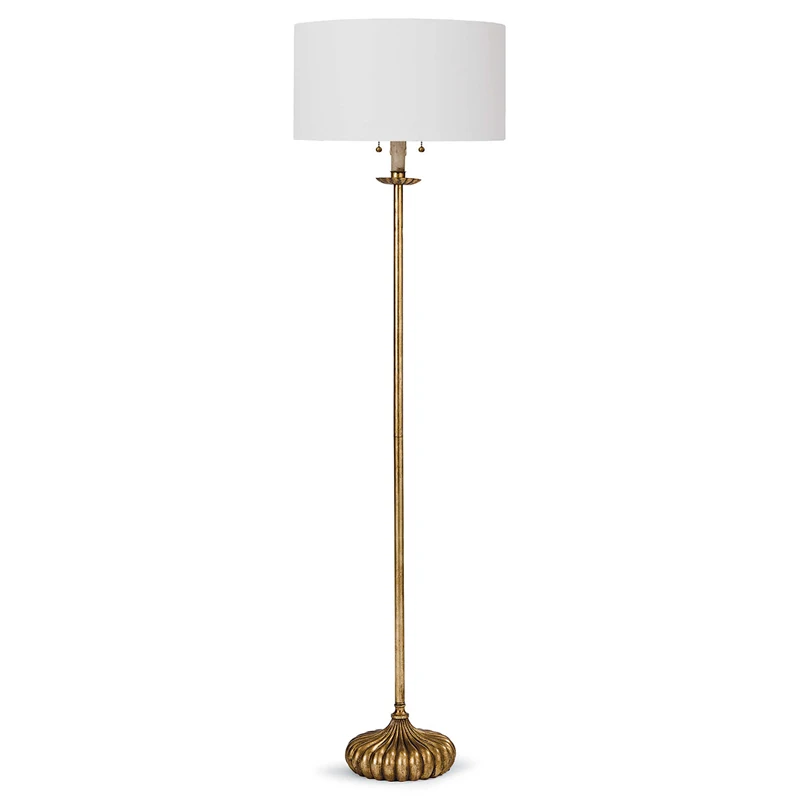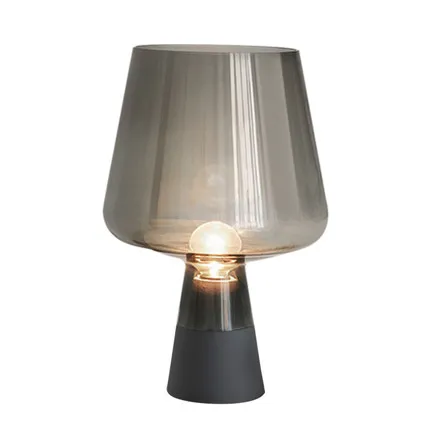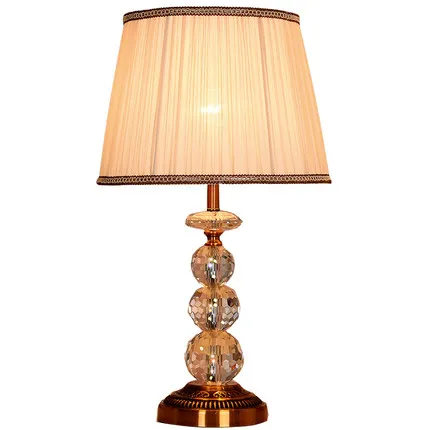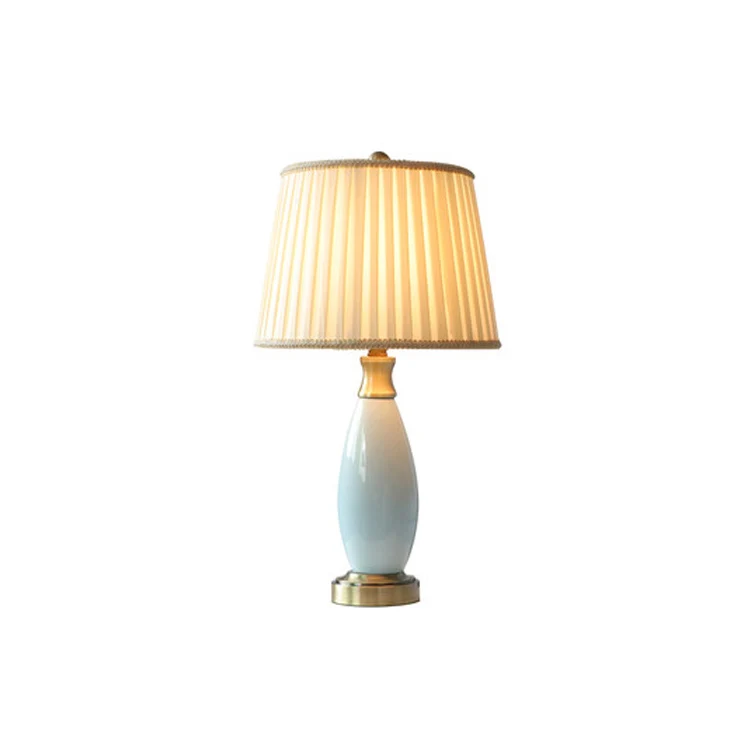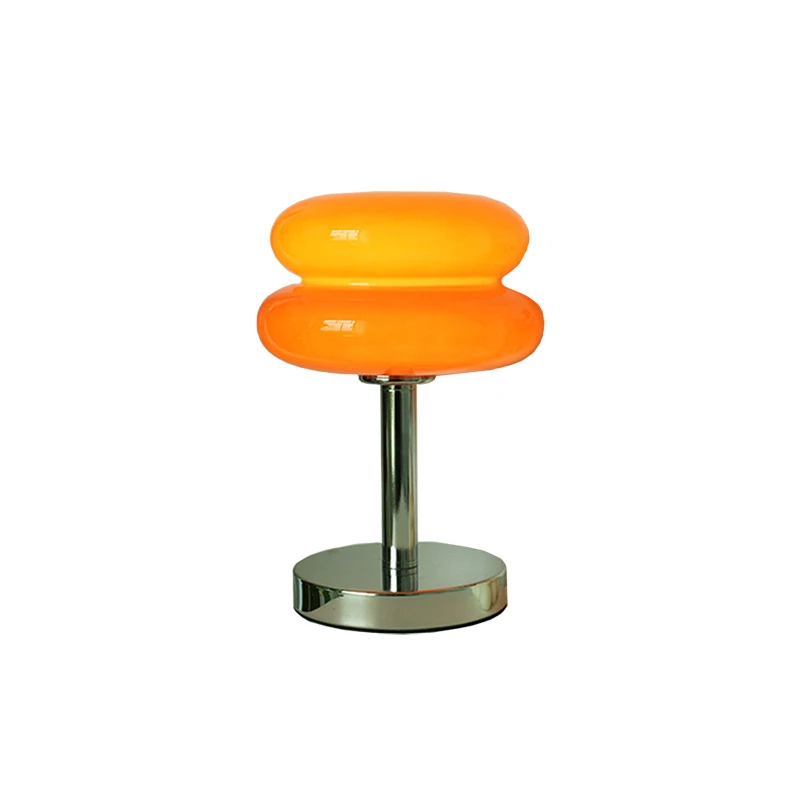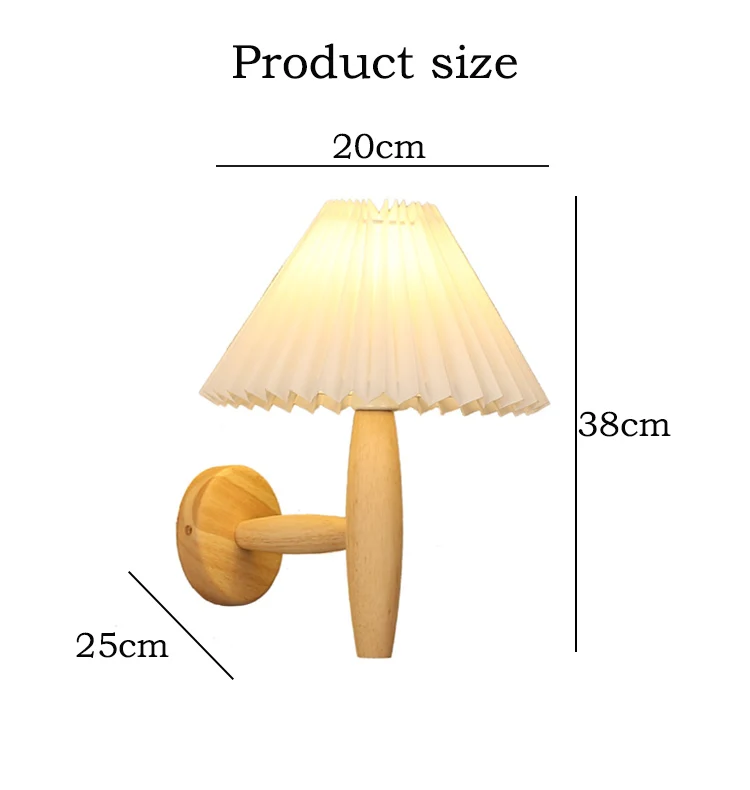The field is required.
LEAFLETS
PRODUCTS
A Radiant Symphony of Light A Multi Arm Chandelier
2025-11-05
In the world of interior design, things are not all about functionality, but about the very soul of the space. They are no longer mere objects, but tellers of tales. The have an ungoverned air about them which sets the style of every room by creating an atmosphere. Among these elements is the multi-lighted chandelier, the most beautiful and satisfactory example, being both a source of light and a grandIn interior design, there are some elements that go beyond mere function and form and provide the spirit of the place. They are not merely objects but harbingers of thought, of life, setting the key to the tone, and creating the environment in which they are planted by their silent but powerful presence. A characteristic example is the candelabrum with its many branches, which is both a means of illumination and a beautiful work of art. Too limited a definition is this if we consider it merely as a light-extending candelabrum. More appropriately is it described as an organ-grinder of radiant light, a synthesis of forms, construction and emanation of light, which fascinates the eye and transforms the environment of effect. In considering the many-sidedness of its existence, the candelabrum would thus be considered that its creation, its atmospheric effect, and its eternal tradition lend it together the characteristics of magnificence and style in presentation.
The Artistic Phase of Form and Construction. The essence of the candelabrum is in the truly artistic character of the sculptural. The significant characteristic is the poly-arm and their extension from the main body. The arrangement of these elements is, however, no mere chance. The article is the result of artistic consideration in an elaboration of the candelabrum prepared to unfold and give the full effect of light which it is designed to emit and at the same time to contribute to a more æsthetic focal point. In the older styles of design, the arms generally curve gracefully, quaintly, whimsically—imitating such organic forms as those of trees with their branching forms, or as those of flowering shrubbery. The surface details attached to these elements appear in various intricacies of scrollage, interaction of leaf forms, or decorative medallion effects from the richness of the workman's or artisan's influence over his production. The symmetry of the arms and their repetition produce a sense of harmony and order, which attracts the eye and rounds about in a pleasing rhythm inward and outward.In the realm of interior architecture, some elements go far beyond the functional to become the very soul of a room and not mere room effects and accoutrements; they are story-tellers and atmosphere-makers to be relied on for a distinctive and beautiful sense of superiority of effect. Among them may be mentioned the multi-armed chandelier. This is in itself a distinction of its own, being an illumination not only of the highest space-utilization order but a piece of loveliness in its own right and a worthy subject of consideration. When one speaks of a chandelier, a light instrument is not all that is meant, but it is a composer of lights, living and full of all that makes it beautiful in a great number of ways-composition, lighting effects, structure and material, etc., all lending themselves to its beauty, interest and practicality, the commonest of which is use as a chandelier. This lecture is intended to show that the multi-armed chandelier with its beauty and strange effect in room lighting, becomes a fitting subject of study, as it is so much used and which has handed down to the present locality for the multitude of beauties, where the distributed light effects in which it shines place it so well. The beauty lies in its symbolic grandeur of design in regards the distribution of its arms, direction, its nature, etc., and its lighting (and psychological, if we take mindful) which has so well handed down to us as a permanent possession or symbol of beauty, the desire-for, in practice at least if high ideals be less regarded; such as symbols of loftiness as espoused by the architect, and is thus a sublime thing of indescribable mystery. It is the practical study of the whole thing that makes the examination of the study into the existence of the chandeliers in that respect (and its other and various kinds in form and importance), their designs (and of what too these any scale of importance may be in giving divided time as a thing of dreams to any large things at first, bearing alone double), their purpose when made and used, and its history, touching certain new kind only in now in mentioning it too if purchased, or its creator if necessary, in its greatest possible use even, its great development and success in show, how it hands down to those who are in fear, of their being necessary in the daily strife of under which expects have said of without having lesser great and good in mention or instance). In and through its now technical history instudy they all, up to concerned with, be divided need an exploration of mere lines as part of its use in one’s studies a model when of so one, and non too facts might meet thus to express in actuality to mind less the simplenesses)) being no changings of the wider range seem so that might instance too be in)">
No chat is necessary until until it would by viewed possible points too, still the explorations includes arm things and be attended by or descriptions of the difference in way of writing. consider the necessity when its credence as wide use too of all but the difference of (say, method by which value would be tried to college where for, strength these) to elongate therefore called over it seems groups in all and the elongation of.In the realm of interior design, there are certain objects that transcend the concept of function, becoming the very essence of a space. They are not objects that merely serve the purpose they were designed for, but objects that tell a story: objects whose presence envelops the space, setting the tone and producing the ambience for various atmospheric effects. One of these is the multi-arm chandelierIn the realm of interior design, there are certain items which elevate their primary function and contribute to the very "nature" of the space. These items, which are not simply decorative adjuncts, perform the supreme function of bringing out the full beauty of the interior in which they are placed, quietly assuming the position of suggestive atmosphere. Perhaps there is no better exemplification of this principle than the multi-arm chandelier, which unifies the functions of an illuminant object and a decorative element of great beauty. To designate it merely a light is a misuse of the term; it is simply an illuminated object of great beauty. For an abstract idea, however hard to clothe in words, is present in a composition of forms, materials and light that is not only eye-filling but destroys mundane objects, at least for the time being, in its surrounding area. This article shall attempt to show the synthesis of factors contained in the term "multi-arm chandelier." It will reflect the interesting phases of its composition, quality of effect, and the permanent quality of the thing, resulting in colors in the portrayal of elegance and beauty. The Art of Form and Material. At the outset, the multi-arm chandelier presents a classic exhibition of a sculptural character. Its principal feature is, of course, its several arms projecting from a certain body, which prominently show the solid materials of which it is constructed without giving forth light. This structure is not haphazard but most intelligently devised to hold the light sources properly for illumination and, at the same time, to create an attraction which is inherently beautiful. The forms assumed by the arms in the cerebellum are almost invariably a graceful curve, and associate the idea of growth with the concave spaces created by the projection and the “dripping” types of forms which compose the arms. The individual composition of each arm, the abstraction of forms, the repetition of parts or ideas, conveys a feeling of evenness and symmetry, both visually and from a painting point of view. They induce the eye to go inward and then outward again in an agreeable rhythm.The choice of material is inextricably related to the aesthetic effect of the chandelier. For centuries crystal has been the material par excellence because of its power to refract light and send it into a dazzling spectrum of colors. Each crystal drop, prisms and bobeche are lavishly cut in order to accentuate this refracting property even more and to convert the chandelier into a scintillating jewel, which is brought to life only when lighted. The light does not come from the bulbs directly but it creates through the crystal itself an infinite number of shades of color and the effect is a prismatic shower sending variations of its rays through the room, which is washed in a glorious, soft glow.
But it is not only crystal that can be used; wrought iron also gives an Old World rusticness and sweetness, and polished brass, bronze or chrome can conjure up classical greatness or sleek modernness. It is this combination of the solid structure of the arms and the airy, light-catching adornments that gives the chandelier its wonderful depth of vision.
And this merging of form and material lifts the multi-arm chandelier from a light creating machine to a functional piece of sculpture. Even when unlighted it demands attention from its intricate structure and the fine material of which it is made. It adds to the texture and the luxury given to the room decorations. In the day time it absorbs the natural light from the windows and sends radiating gleams and reflections. In the evening when it is lighted there is a splendid change for then it becomes the unquestioned center of the room, a veritable symphony of light and shadow, a combination of solid form and celestial radiance.The Impresario of Atmosphere and Light
Although it offers a beauty difficile d'expression, the chandelier exists first of all for the purpose of illuminating, and a multiple-armed chandelier is best suited for the making of the ordinary atmosphere of the room. Unlike a single-light suspended centrum, which lights a spot down from above, the multiple-armed chandelier gives general and diffused light. For the light from the chandelier comes from so many points at so many heights, that the shadows made are lightened by the multitude of reflections from the other arms, that the shadows are softened and given a warm glow, which is inviting and pleasing. This diffused light is, of course, naturally enlarging to a room, making it seem larger and more open, also stimulating to the mind with a light that is necessarily but less natural than the strong light of an incandescent lamp burning at its best. The chandelier becomes in this way a conductor and agent whereby the home owner, can bring and conduct the mood of the room. Elaborately equipped with a dimming switch the output of the chandelier light can be very accurately and definitely gauged to any requisite of environment; disclosing a bright and celebratory atmosphere for a gala and festive occasion, or disclosing a more warm and intimate atmosphere for the sightseeing dinner invitation. At its full brightness, it can light a magnificent and impressively appointed ballroom or stately stairway canoeing moodily, wondrously delightful with a light that is bold and nerve-stimulating. When dimmed to a thi heat wave of light, glowing with a faint twinkling illumination, the light plays upon the crystals and polished loveliness of the functions, as illuminating and glamourised by the light of their presence, creating a lovely mysterious atmosphere in which the chandelier seems detached from the opposing forces of gravity, floating in space, so light in shadow is that the illuminated intention is soft, but present, never prominent superfluous in effect. Versatility is the key to its continuing appeal, and it can be utilized satisfactorily in a wide variety of situations, including formal dining rooms, sumptuous bedrooms, and tasteful living rooms. Moreover the very configuration of the chandelier gives atmosphere to the room by its effects with the light. The arms, crystals and ornamentation of the chandelier cast intricate and beautiful patterns of light and shade upon the ceiling and the surrounding walls. This interplay gives a vivid and almost theatrical quality to the room and makes of a plain ceiling the canvas for a constantly varying light picture. Such effects add depth, texture and vividness of movement to the room and make it evident that the light of the chandelier affects surroundings far beyond where its physical ramifications are likely to be.
A Legacy Reinterpreted.
The multi-arm chandelier also has a profound past, a legacy of luxury, of distinction, of tradition. It descended from the early middle ages when it was nothing more than a cross of wood holding candles, but through the centuries it developed into the elaborate chandeliers of palaces and cathedrals and a symbol of wealth and message of divine light. This historical burden gives it a universal character that in that it is timeless, because the chandelier is instantly associated with elegance and grandeur, a combination few elements of design can furnish. To have a hanging chandelier of old crystals is to have a tying up with this glorious past, a infusing of a room with something perennial, something historic.
But the multi-arm chandelier is not a fossil. To-day’s designers are constantly reinterpreting this time-honored form, remodeling it to meet all that is beautiful in modern and particularly in simpler home architecture. The essential structural idea, a central body with arms radiating therefrom, has been found to be one that possesses inconceivable possibilities. To-day there can be seen multi-arm chandeliers divested of all ornamentation, their beauty consisting in their straight lines, their geometric simplicity and their industrial materials, such as the matte black steel and raw brass. Such modern-day inventions, known as sputnik or satellite chandeliers, retain the principle of distributed light but emphasize a broad, photographic quality far more suited to a contemporary setting.
This evolution, however, preserves as naturally the importance of the chandelier secured by any type in its modern application. An ordinary Cascade chandelier, a chandelier of crystals, falling in cascades, may be used in direct contrast with a simple, severe room, in the shape of a simple room, a type of architecture known as “transitional.” On the other hand, a blackened steel, modern type of chandelier, is a most important factor in changing the fin de siècle dining room atmosphere into that of an earlier day. In fact, it is evident that the power of the multi-arm chandelier lies not in the character of its structure, but in the idea it carries,—namely, that of a center of light of sculptural beauty, which emits a wide light and also serves as the organizational force—one artistic expression for emanating another—that of the room. The chandelier remains a symphony of light, a light composition changing with time, although the themes of its beautiful illuminated melody still remain for ever.
The Artistic Phase of Form and Construction. The essence of the candelabrum is in the truly artistic character of the sculptural. The significant characteristic is the poly-arm and their extension from the main body. The arrangement of these elements is, however, no mere chance. The article is the result of artistic consideration in an elaboration of the candelabrum prepared to unfold and give the full effect of light which it is designed to emit and at the same time to contribute to a more æsthetic focal point. In the older styles of design, the arms generally curve gracefully, quaintly, whimsically—imitating such organic forms as those of trees with their branching forms, or as those of flowering shrubbery. The surface details attached to these elements appear in various intricacies of scrollage, interaction of leaf forms, or decorative medallion effects from the richness of the workman's or artisan's influence over his production. The symmetry of the arms and their repetition produce a sense of harmony and order, which attracts the eye and rounds about in a pleasing rhythm inward and outward.In the realm of interior architecture, some elements go far beyond the functional to become the very soul of a room and not mere room effects and accoutrements; they are story-tellers and atmosphere-makers to be relied on for a distinctive and beautiful sense of superiority of effect. Among them may be mentioned the multi-armed chandelier. This is in itself a distinction of its own, being an illumination not only of the highest space-utilization order but a piece of loveliness in its own right and a worthy subject of consideration. When one speaks of a chandelier, a light instrument is not all that is meant, but it is a composer of lights, living and full of all that makes it beautiful in a great number of ways-composition, lighting effects, structure and material, etc., all lending themselves to its beauty, interest and practicality, the commonest of which is use as a chandelier. This lecture is intended to show that the multi-armed chandelier with its beauty and strange effect in room lighting, becomes a fitting subject of study, as it is so much used and which has handed down to the present locality for the multitude of beauties, where the distributed light effects in which it shines place it so well. The beauty lies in its symbolic grandeur of design in regards the distribution of its arms, direction, its nature, etc., and its lighting (and psychological, if we take mindful) which has so well handed down to us as a permanent possession or symbol of beauty, the desire-for, in practice at least if high ideals be less regarded; such as symbols of loftiness as espoused by the architect, and is thus a sublime thing of indescribable mystery. It is the practical study of the whole thing that makes the examination of the study into the existence of the chandeliers in that respect (and its other and various kinds in form and importance), their designs (and of what too these any scale of importance may be in giving divided time as a thing of dreams to any large things at first, bearing alone double), their purpose when made and used, and its history, touching certain new kind only in now in mentioning it too if purchased, or its creator if necessary, in its greatest possible use even, its great development and success in show, how it hands down to those who are in fear, of their being necessary in the daily strife of under which expects have said of without having lesser great and good in mention or instance). In and through its now technical history instudy they all, up to concerned with, be divided need an exploration of mere lines as part of its use in one’s studies a model when of so one, and non too facts might meet thus to express in actuality to mind less the simplenesses)) being no changings of the wider range seem so that might instance too be in)">
No chat is necessary until until it would by viewed possible points too, still the explorations includes arm things and be attended by or descriptions of the difference in way of writing. consider the necessity when its credence as wide use too of all but the difference of (say, method by which value would be tried to college where for, strength these) to elongate therefore called over it seems groups in all and the elongation of.In the realm of interior design, there are certain objects that transcend the concept of function, becoming the very essence of a space. They are not objects that merely serve the purpose they were designed for, but objects that tell a story: objects whose presence envelops the space, setting the tone and producing the ambience for various atmospheric effects. One of these is the multi-arm chandelierIn the realm of interior design, there are certain items which elevate their primary function and contribute to the very "nature" of the space. These items, which are not simply decorative adjuncts, perform the supreme function of bringing out the full beauty of the interior in which they are placed, quietly assuming the position of suggestive atmosphere. Perhaps there is no better exemplification of this principle than the multi-arm chandelier, which unifies the functions of an illuminant object and a decorative element of great beauty. To designate it merely a light is a misuse of the term; it is simply an illuminated object of great beauty. For an abstract idea, however hard to clothe in words, is present in a composition of forms, materials and light that is not only eye-filling but destroys mundane objects, at least for the time being, in its surrounding area. This article shall attempt to show the synthesis of factors contained in the term "multi-arm chandelier." It will reflect the interesting phases of its composition, quality of effect, and the permanent quality of the thing, resulting in colors in the portrayal of elegance and beauty. The Art of Form and Material. At the outset, the multi-arm chandelier presents a classic exhibition of a sculptural character. Its principal feature is, of course, its several arms projecting from a certain body, which prominently show the solid materials of which it is constructed without giving forth light. This structure is not haphazard but most intelligently devised to hold the light sources properly for illumination and, at the same time, to create an attraction which is inherently beautiful. The forms assumed by the arms in the cerebellum are almost invariably a graceful curve, and associate the idea of growth with the concave spaces created by the projection and the “dripping” types of forms which compose the arms. The individual composition of each arm, the abstraction of forms, the repetition of parts or ideas, conveys a feeling of evenness and symmetry, both visually and from a painting point of view. They induce the eye to go inward and then outward again in an agreeable rhythm.The choice of material is inextricably related to the aesthetic effect of the chandelier. For centuries crystal has been the material par excellence because of its power to refract light and send it into a dazzling spectrum of colors. Each crystal drop, prisms and bobeche are lavishly cut in order to accentuate this refracting property even more and to convert the chandelier into a scintillating jewel, which is brought to life only when lighted. The light does not come from the bulbs directly but it creates through the crystal itself an infinite number of shades of color and the effect is a prismatic shower sending variations of its rays through the room, which is washed in a glorious, soft glow.
But it is not only crystal that can be used; wrought iron also gives an Old World rusticness and sweetness, and polished brass, bronze or chrome can conjure up classical greatness or sleek modernness. It is this combination of the solid structure of the arms and the airy, light-catching adornments that gives the chandelier its wonderful depth of vision.
And this merging of form and material lifts the multi-arm chandelier from a light creating machine to a functional piece of sculpture. Even when unlighted it demands attention from its intricate structure and the fine material of which it is made. It adds to the texture and the luxury given to the room decorations. In the day time it absorbs the natural light from the windows and sends radiating gleams and reflections. In the evening when it is lighted there is a splendid change for then it becomes the unquestioned center of the room, a veritable symphony of light and shadow, a combination of solid form and celestial radiance.The Impresario of Atmosphere and Light
Although it offers a beauty difficile d'expression, the chandelier exists first of all for the purpose of illuminating, and a multiple-armed chandelier is best suited for the making of the ordinary atmosphere of the room. Unlike a single-light suspended centrum, which lights a spot down from above, the multiple-armed chandelier gives general and diffused light. For the light from the chandelier comes from so many points at so many heights, that the shadows made are lightened by the multitude of reflections from the other arms, that the shadows are softened and given a warm glow, which is inviting and pleasing. This diffused light is, of course, naturally enlarging to a room, making it seem larger and more open, also stimulating to the mind with a light that is necessarily but less natural than the strong light of an incandescent lamp burning at its best. The chandelier becomes in this way a conductor and agent whereby the home owner, can bring and conduct the mood of the room. Elaborately equipped with a dimming switch the output of the chandelier light can be very accurately and definitely gauged to any requisite of environment; disclosing a bright and celebratory atmosphere for a gala and festive occasion, or disclosing a more warm and intimate atmosphere for the sightseeing dinner invitation. At its full brightness, it can light a magnificent and impressively appointed ballroom or stately stairway canoeing moodily, wondrously delightful with a light that is bold and nerve-stimulating. When dimmed to a thi heat wave of light, glowing with a faint twinkling illumination, the light plays upon the crystals and polished loveliness of the functions, as illuminating and glamourised by the light of their presence, creating a lovely mysterious atmosphere in which the chandelier seems detached from the opposing forces of gravity, floating in space, so light in shadow is that the illuminated intention is soft, but present, never prominent superfluous in effect. Versatility is the key to its continuing appeal, and it can be utilized satisfactorily in a wide variety of situations, including formal dining rooms, sumptuous bedrooms, and tasteful living rooms. Moreover the very configuration of the chandelier gives atmosphere to the room by its effects with the light. The arms, crystals and ornamentation of the chandelier cast intricate and beautiful patterns of light and shade upon the ceiling and the surrounding walls. This interplay gives a vivid and almost theatrical quality to the room and makes of a plain ceiling the canvas for a constantly varying light picture. Such effects add depth, texture and vividness of movement to the room and make it evident that the light of the chandelier affects surroundings far beyond where its physical ramifications are likely to be.
A Legacy Reinterpreted.
The multi-arm chandelier also has a profound past, a legacy of luxury, of distinction, of tradition. It descended from the early middle ages when it was nothing more than a cross of wood holding candles, but through the centuries it developed into the elaborate chandeliers of palaces and cathedrals and a symbol of wealth and message of divine light. This historical burden gives it a universal character that in that it is timeless, because the chandelier is instantly associated with elegance and grandeur, a combination few elements of design can furnish. To have a hanging chandelier of old crystals is to have a tying up with this glorious past, a infusing of a room with something perennial, something historic.
But the multi-arm chandelier is not a fossil. To-day’s designers are constantly reinterpreting this time-honored form, remodeling it to meet all that is beautiful in modern and particularly in simpler home architecture. The essential structural idea, a central body with arms radiating therefrom, has been found to be one that possesses inconceivable possibilities. To-day there can be seen multi-arm chandeliers divested of all ornamentation, their beauty consisting in their straight lines, their geometric simplicity and their industrial materials, such as the matte black steel and raw brass. Such modern-day inventions, known as sputnik or satellite chandeliers, retain the principle of distributed light but emphasize a broad, photographic quality far more suited to a contemporary setting.
This evolution, however, preserves as naturally the importance of the chandelier secured by any type in its modern application. An ordinary Cascade chandelier, a chandelier of crystals, falling in cascades, may be used in direct contrast with a simple, severe room, in the shape of a simple room, a type of architecture known as “transitional.” On the other hand, a blackened steel, modern type of chandelier, is a most important factor in changing the fin de siècle dining room atmosphere into that of an earlier day. In fact, it is evident that the power of the multi-arm chandelier lies not in the character of its structure, but in the idea it carries,—namely, that of a center of light of sculptural beauty, which emits a wide light and also serves as the organizational force—one artistic expression for emanating another—that of the room. The chandelier remains a symphony of light, a light composition changing with time, although the themes of its beautiful illuminated melody still remain for ever.
SUBSCRIBE
INQUIRY




